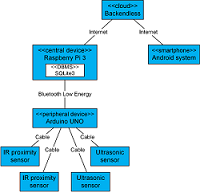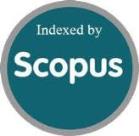A New Parking-Space Detection System Using Prototyping Devices and Bluetooth Low Energy Communication
Keywords:
bluetooth, low energy, embedded system, internet of things, parking systemAbstract
Parking in crowded city areas usually causes serious problems. Drivers spend an amount of time, effort, and fuel while finding someplace to park their vehicles. Although there are many solutions for free parking space indication; they are only suitable for parking lots inside the buildings, such as the shopping malls. However, there are not many solutions for exterior parking lots and for big cities as a whole. The purpose of this paper is to propose solutions to this problem, especially by considering issues like power consumption and communication approaches. A parking-space occupancy detection system is proposed, utilizing Bluetooth Low Energy communication and Arduino-based sensor devices. Raspberry Pi-based central devices redirect the collected data to the cloud-based database system, which makes them available for drivers to use mobile devices with Android systems. The selected components make the proposed system easily deployable and scalable.

Published
How to Cite
Issue
Section
License
Copyright Notice
Submission of a manuscript implies: that the work described has not been published before that it is not under consideration for publication elsewhere; that if and when the manuscript is accepted for publication. Authors can retain copyright in their articles with no restrictions. Also, author can post the final, peer-reviewed manuscript version (postprint) to any repository or website.

Since Jan. 01, 2019, IJETI will publish new articles with Creative Commons Attribution Non-Commercial License, under Creative Commons Attribution Non-Commercial 4.0 International (CC BY-NC 4.0) License.
The Creative Commons Attribution Non-Commercial (CC-BY-NC) License permits use, distribution and reproduction in any medium, provided the original work is properly cited and is not used for commercial purposes.



.jpg)


